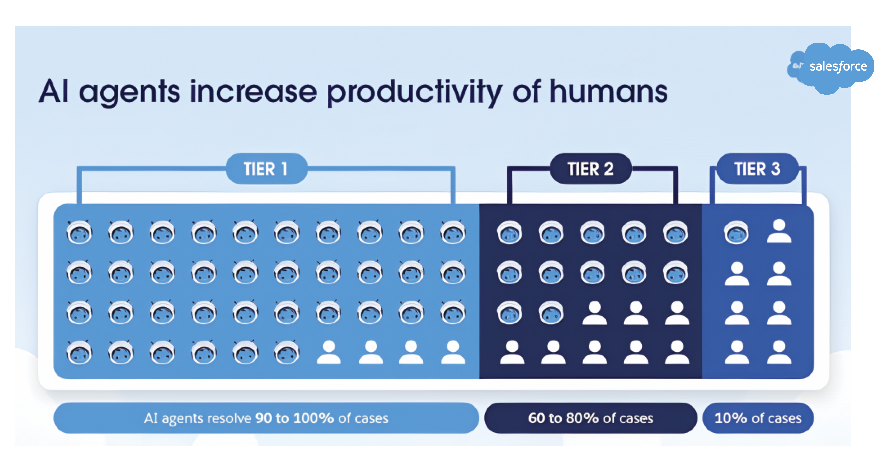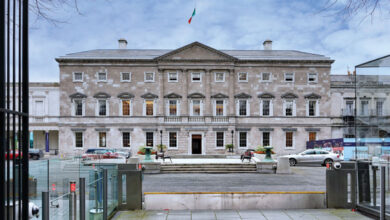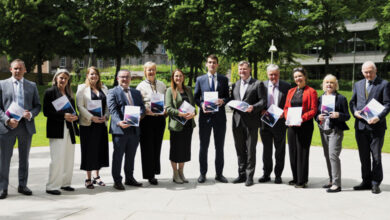Navigating digital transformation and avoiding tomorrow’s legacy

The Irish public sector faces increasing pressure to deliver efficient, citizen-centric services, from health screening, welfare services, social housing and much more.
75 per cent of constituents, according to a BCG study, want the quality of digital government services on par with the services provided by best-in-class private sector companies. This means seamless interactions and a focus on self-service and personalisation. Government policies advocate for cloud-first platforms believing that by emulating a cloud-first approach they will achieve the same outcomes.
However, the challenge for CIOs is transitioning from disconnected, on-premises, point solutions. The UK Government spends 50 per cent of its IT budget supporting legacy systems. In this world the lived experience of most public sector workers is ‘swivel-chairing’ between applications and using unsecured and unauditable spreadsheets to plug the gaps.
So how and why is ‘a platform’ better? One of the promises of a platform is that it will deliver best-of-breed reusable components and prevent everyone from reinventing the wheel. Take a household for example, the application has to reflect the real world complexity of households, not just Mum, Dad and three children. This is a known problem so why not build it once and use it in many settings across, health, social care, and so on. Even better, get someone else to build and maintain it. Which brings us to cloud native platforms.
All major vendors like Salesforce, AWS, and Microsoft claim to offer a platform. But what do they mean by platform? Each has a different target audience and architectural philosophies.
‘Builder Platforms’, like Microsoft Azure and AWS, are aimed at replacing physical infrastructure with virtual equivalents. They excel at raw computing power and database services. This is the world of IT, data engineers, and data scientists.
‘Application Platforms’, like Salesforce, focus on automating business processes, leveraging reusable business components, and connecting data together to create a 360 engagement layer. They abstract, as much as possible, the inner workings of databases and servers.
Choosing the right platform is not merely a technology decision; it directly impacts an organization’s ability to deliver a modern digital engagement experience for both citizens and employees. To succeed the choices must be a collaborative decision between IT and the business.
The pitfalls of a ‘code first’ approach
A common misstep within the public sector is the belief that IT can custom-code their way to 360-degree citizen engagement layer using Builder Platforms. This approach is costly, increases delivery risk, and generates significant technical debt. One UK public sector body has recently taken the decision to build its own CRM. No CIO in the commercial world would ever take this approach and their LinkedIn profile picture would soon be decorated with ‘open for work’ if they did.
The potential of agentic AI
AI has the potential to fundamentally improve the delivery of public sector services. Given 73 per cent of Irish public sector CEOs report recruiting as a challenge, employing more people is not the answer. Agentic AI can automate routine tasks using human-like interactions. By offloading routine tasks, employees can focus on high value activities. One childcare services organisation and an early adoptor of Agentforce has seen a 25 per cent reduction in administrative tasks.
To be effective AI needs data. Data ensures the behaviour of the AIs response is accurate and based on the organisation’s policies, services and the data they hold.
Unlocking data
Significant parts of Irish public sector organisations still rely on legacy applications built on obsolete code like COBOL and proprietary databases. All the data is locked away in black boxes attached to a plug stating, ‘Never Unplug’. Even modern applications can have limited ability to integrate data either by design or omission.
In an effort to fuel AI and address the disconnected nature of enterprise data, some vendors propose a “One Data Lake to Rule Them All” strategy where all data is sucked into their solution. However, this risks vendor lock-in. In three to five years, CIOs will be grappling with extracting data from that data lake to a new one, incurring further data migration costs.
Salesforce has a different view founded on 2.5 decades of developing the idea of a customer 360. Now a deeply unified platform, Salesforce offers a significant strategic advantage over the ‘One Data Lake to Rule Them All’ approach.
- Metadata-based architecture: Ensures consistent security, access control, and auditability of data across the platform
- Data minimisation and secure access: Unlocks data from existing systems of record, minimising the need to move data, creating a robust foundation for trusted, secure, and grounded Agentic AI.
- Use prebuilt components: Modular and reusable components, like the household data model reduce the need for custom code and its associated maintenance burden.
The blended platform model
The solution is not to abandon Builder Platforms, but to use them for their strengths like virtualisation, data engineering. This blended mode of Builder and Application Platform provides choice, minimises vendor lock-in, and combines the best of both worlds.
- Builder: Virtual private cloud: Moving from on-premise infrastructure to a virtual server environment to reduce the overall burden of maintaining physical infrastructure
- Builder: Data engineering and data science. Large-scale data management and processing. Laying the groundwork for machine learning and AI model creation.
- Application: Use Salesforce’s deeply unified platform to unlock your enterprise data, create a unified citizen view and make data and AI actionable in the flow of work
To learn more about how Salesforce supports the public sector, visit our website: www.salesforce.com/government
For additional insights on how Salesforce helps modernise public services and boost operational efficiency with AI, explore our Resource Centre: sfdc.co/uk-resources
Richard Boyd, CTO – Public Sector UKI, Salesforce







